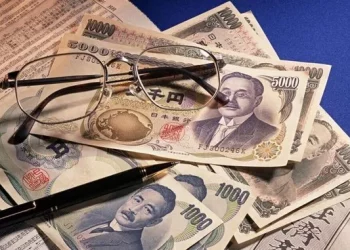In the world of international finance, exchange rates play a vital role in determining how much one currency is worth in terms of another. For individuals and businesses involved in foreign exchange (forex) trading, travel, or cross-border transactions, understanding the dynamics of currency conversion is essential. One of the most common conversions is that between the Australian Dollar (AUD) and the United States Dollar (USD), two of the most traded currencies globally. In this article, we will explore the factors that influence the value of the AUD against the USD and help you understand what $2,000 AUD is worth in USD.
1. Understanding Currency Exchange Rates
Before we delve into the specifics of converting $2,000 AUD to USD, it is crucial to understand the concept of currency exchange rates. An exchange rate is the value of one currency relative to another. For example, if the exchange rate between the AUD and USD is 0.64, it means that 1 AUD is equivalent to 0.64 USD.
Exchange rates fluctuate constantly due to a variety of factors such as economic data releases, geopolitical events, interest rate decisions by central banks, inflation rates, and market sentiment. These fluctuations can make it challenging to predict the exact value of one currency relative to another at any given moment.
2. How Exchange Rates Affect Currency Conversions
Currency conversion is the process of exchanging one currency for another. To determine how much $2,000 AUD is worth in USD, you need to know the current exchange rate between the Australian Dollar and the United States Dollar. For example, if the exchange rate is 0.64 USD for 1 AUD, the formula for the conversion is:
Amount in USD=Amount in AUD×Exchange Rate
Using this formula, if you have $2,000 AUD and the exchange rate is 0.64 USD, the calculation would be:
2,000AUD×0.64=1,280USD
This means that $2,000 AUD would be equivalent to $1,280 USD at an exchange rate of 0.64.
However, exchange rates are constantly changing, so the value of $2,000 AUD in USD may vary from day to day. For example, if the exchange rate increases to 0.68 USD for 1 AUD, the conversion would be:
2,000AUD×0.68=1,360USD
This illustrates how fluctuations in exchange rates can impact the amount of USD you receive when converting AUD.
3. Factors That Influence the AUD/USD Exchange Rate
Several factors influence the value of the Australian Dollar against the US Dollar. These factors include:
Interest Rates
Interest rates set by central banks play a significant role in currency values. When the Reserve Bank of Australia (RBA) raises interest rates, it can increase demand for the AUD, making it stronger against the USD. Similarly, if the US Federal Reserve raises interest rates, the USD may strengthen, leading to a change in the exchange rate between the two currencies.
Economic Indicators
Economic data releases, such as GDP growth, unemployment rates, inflation, and retail sales, can have a substantial impact on the value of a currency. Strong economic performance in Australia or the US can lead to an appreciation of the respective currency, while weaker data can cause a depreciation.
Commodity Prices
Australia is a major exporter of commodities such as iron ore, coal, and gold. As a result, the AUD is often influenced by fluctuations in commodity prices. When commodity prices rise, the Australian economy benefits, and the AUD tends to appreciate. Conversely, a decline in commodity prices can put downward pressure on the AUD.
Political and Geopolitical Events
Political stability and geopolitical events can also affect the exchange rate. For example, elections, trade policies, or international tensions can create uncertainty in the markets, leading to changes in currency values. The USD is often viewed as a safe-haven currency during times of global uncertainty, which can lead to a stronger USD.
Market Sentiment
Forex traders and investors make decisions based on market sentiment, which can be influenced by news, events, and expectations about future economic conditions. If traders expect the AUD to strengthen, they may buy AUD, which can drive up its value relative to the USD. Conversely, if they anticipate weakness in the Australian economy, they may sell AUD, leading to a depreciation of the currency.
4. How to Convert $2,000 AUD to USD Using Current Rates
To convert $2,000 AUD to USD at any given moment, you need to know the current exchange rate. This can be done in several ways:
Online Currency Converters
There are many online tools and websites, such as XE.web, OANDA, or Google, that provide real-time exchange rates. By entering the amount of AUD you want to convert, these tools will automatically provide you with the equivalent amount in USD based on the latest exchange rate.
Forex Brokers and Banks
Forex brokers and banks also provide currency conversion services. If you are planning to exchange physical currency or transfer money internationally, they will offer you an exchange rate and charge a fee or commission for the service. It is important to compare rates and fees from different providers to get the best deal.
Mobile Apps
There are several mobile apps available that allow you to track and convert currencies in real time. These apps often include additional features such as historical exchange rate data and alerts for when a certain exchange rate is reached.
5. The Role of Spreads and Fees in Currency Conversion
When converting currencies, especially in the context of forex trading or exchanging money through a bank, it is essential to be aware of spreads and fees. The spread is the difference between the buy price and the sell price of a currency pair. For example, if the AUD/USD pair is quoted at 0.6400/0.6440, the spread is 0.0040, or 40 pips.
In addition to the spread, banks and currency exchange services often charge a fee or commission for processing the transaction. This can impact the final amount you receive when converting $2,000 AUD to USD. It is important to take these costs into account when considering currency conversions.
6. Impact of Currency Conversions on International Business and Trade
For businesses involved in international trade, currency conversion is an essential part of operations. When companies in Australia import goods from the US or export products to American markets, they must convert their local currency to the appropriate foreign currency. This process involves not only understanding exchange rates but also managing the risks associated with currency fluctuations.
Hedging Currency Risk
One strategy that businesses use to protect themselves from adverse exchange rate movements is currency hedging. Hedging involves entering into financial contracts, such as forward contracts or options, to lock in a specific exchange rate for a future date. This helps businesses avoid the risk of losing money due to unfavorable exchange rate movements.
Pricing and Profit Margins
Currency fluctuations can impact the pricing of goods and services in international markets. For example, if the AUD strengthens against the USD, Australian exporters may find their products becoming more expensive for US buyers, potentially reducing demand. On the other hand, a weaker AUD could make Australian goods more competitive in the US market, boosting sales.
Conclusion
Understanding the exchange rate between the Australian Dollar (AUD) and the United States Dollar (USD) is crucial for anyone involved in forex trading, international business, or even simple travel. The value of $2,000 AUD in USD will vary depending on the current exchange rate, which is influenced by factors such as interest rates, economic performance, commodity prices, political events, and market sentiment.
By using the appropriate tools, such as online converters, forex brokers, or mobile apps, you can quickly determine how much $2,000 AUD is worth in USD. However, it’s important to keep in mind that exchange rates can fluctuate rapidly, and you may also incur additional costs such as fees, commissions, or spreads when converting currencies.
In the globalized economy, understanding how currency conversions work is more important than ever. Whether you’re a traveler, investor, or business owner, the ability to monitor and navigate currency fluctuations can help you make informed decisions and manage your finances effectively.
Related Topics:



























